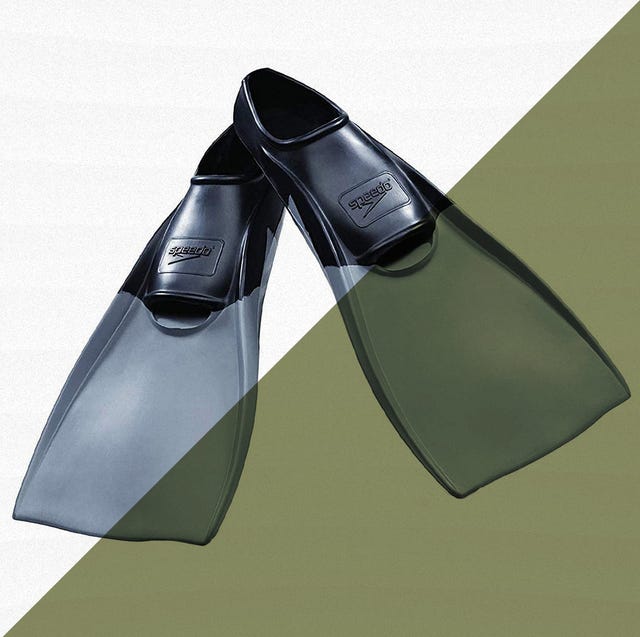Conserve energy while you swim, snorkel, or dive by wearing a set of fins (that is, flippers for the uninitiated). With the right pair underfoot, you’ll be able to dive deeper, faster, and longer every time.
Renting or borrowing fins can be a painful process. Sore spots, blisters, and chafing can quickly cut a water session short. With a comfortable set of fins on your feet, you’ll be like a fish—hardly noticing your fins at all. In this guide, we break down the different fin types and share our top recommendations so you can find your perfect pair.
Types of Fins
Every flipper has a foot pocket connected to a blade. When you kick, water passes over the blade’s greater surface area, propelling you farther forward than your body alone can. Although all fins help you move more efficiently underwater, the shape and size varies depending on the activity for which they’re made. As a rule, short fins are best for agility, whereas long fins help divers move forward with speed.
Fins or flippers made specifically for swimming have short, agile blades that help a swimmer maintain their form. Snorkel fins range from short to long and are flexible enough to help a snorkeler move on the surface of the water with ease. Scuba diving fins are designed to maximize kick power with their longer and wider blades, helping a scuba diver push not only themselves but also their gear through the water. Free diving fins are built with long, thin blades that help free divers and people who spearfish dive deep, expending as little energy as possible. If you’re looking for one set of fins that can handle multiple sports, the Tusa FF-23 Solla is an affordable option.
Finding the Right Fit
Fins come with two heel types: open and closed. Open heel fins have a foot pocket with an adjustable back strap, making them easy to don and take off. This style is sometimes best worn with dive booties for comfort, warmth, and fit. The adjustability of open heel fins makes this style ideal for families and groups, because multiple people can tailor the fit of one pair. Closed heel fins have a full foot pocket that’s available in set sizes, creating a better fit for greater energy transfer from leg to fin with each kick.
Fins are unisex and correspond to shoe size, though you’ll want to check the size chart for each model. When sizing, take note if that model is best worn with bare feet, neoprene socks, or dive booties, and adjust accordingly. Dive booties come in multiple thicknesses, catering to varying water temperatures. The thicker the material, the more suitable it is for cold water. If you feel pinching, hot spots, or chafing, the foot pocket might not suit your foot shape, or you should try a larger size.
How We Evaluated
As an AIDA 3 free diver, experienced scuba diver, swimmer, and regular snorkeler, I have tested tens of fins personally. I’m also the founder of The Salt Sirens, a website about ocean sports. My dive writing has appeared in outlets such as Scuba Diving Magazine, Vice, Moon Travel Guides, and more. The selections below feature the best flippers for swimming, snorkeling, scuba diving, and free diving and include recommendations from industry professionals and athletes. I prioritized comfort, durability, effort-to-propulsion efficiency, and value for money when fine-tuning the list. I also scoured popular review websites, social media communities, and polled people within my network to see which fins are all but guaranteed to make your time in the water more enjoyable.








Comments